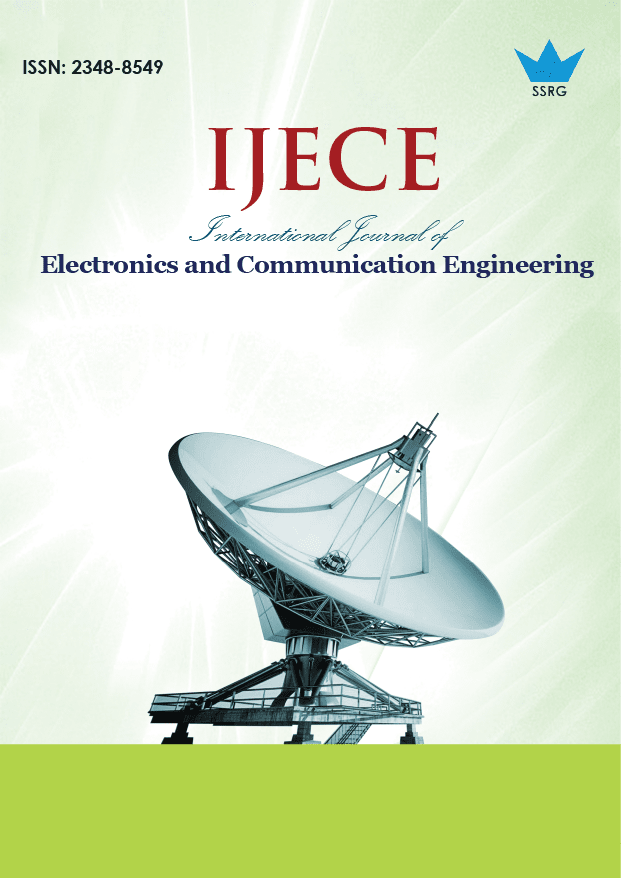An Efficient and Scalable Mutual Symmetric Key Establishment and Management for IoT Devices

| International Journal of Electronics and Communication Engineering |
| © 2025 by SSRG - IJECE Journal |
| Volume 12 Issue 7 |
| Year of Publication : 2025 |
| Authors : Ahmed S. Alfakeeh |
How to Cite?
Ahmed S. Alfakeeh, "An Efficient and Scalable Mutual Symmetric Key Establishment and Management for IoT Devices," SSRG International Journal of Electronics and Communication Engineering, vol. 12, no. 7, pp. 238-245, 2025. Crossref, https://doi.org/10.14445/23488549/IJECE-V12I7P119
Abstract:
Recently, the Internet of Things (IoT) has attracted the attention of many researchers due to its popularity in various applications. Connecting different capability devices in the Internet of Things architecture makes security a big challenge. Datagram Transport Layer Security Protocol is considered a standard for securing communication among Internet of Things devices by establishing a secret key. However, the default method, X.509, requires certificates and public key infrastructure that are more resource-consuming and not suitable for resource-constrained devices. On the other hand, datagram transport layer security supports the pre-shared key approach and raw pubic keys, which are lightweight but not scalable for such large networks. Hence, a scalable and lightweight mutual key establishment and management protocol is proposed for such a large number of resource-constrained IoT devices. The implementation of the proposed scheme in Contiki OS and on a real IoT platform shows its performance evaluation in terms of feasibility and scalability.
Keywords:
Internet of Things, Authentication, Key establishment, Security, Secret key.
References:
[1] Matheus K. Ferst et al., “Implementation and Analysis of a Secure Communication with SunSpec Modbus and Transport Layer Security Protocols for Short-Term Energy Management Systems,” IEEE Access, vol. 13, pp. 105183-105198, 2025.
[CrossRef] [Google Scholar] [Publisher Link]
[2] Mingping Qi, and Chi Chen, “HPQKE: Hybrid Post-Quantum Key Exchange Protocol for SSH Transport Layer from CSIDH,” IEEE Transactions on Information Forensics and Security, vol. 20, pp. 2122-2131, 2025.
[CrossRef] [Google Scholar] [Publisher Link]
[3] Geovane Fedrecheski, Mališa Vučinić, and Thomas Watteyne, “Performance Comparison of EDHOC and DTLS 1.3 in Internet-of-Things Environments,” 2024 IEEE Wireless Communications and Networking Conference (WCNC), Dubai, United Arab Emirates, pp. 1-6, 2024.
[CrossRef] [Google Scholar] [Publisher Link]
[4] Min Shi et al., “A Formal Analysis of 5G EAP-TLS Protocol,” IEEE Transactions on Networking, pp. 1-13, 2025.
[CrossRef] [Google Scholar] [Publisher Link]
[5] Muhammad Rana, Quazi Mamun, and Rafiqul Islam, “Enhancing IoT Security: An Innovative Key Management System for Lightweight Block Ciphers,” Sensors, vol. 23, no. 18, pp. 1-25, 2023.
[CrossRef] [Google Scholar] [Publisher Link]
[6] Wei Yang et al., “SAKMS: A Secure Authentication and Key Management Scheme for IETF 6TiSCH Industrial Wireless Networks Based on Improved Elliptic-Curve Cryptography,” IEEE Transactions on Network Science and Engineering, vol. 11, no. 3, pp. 3174-3188, 2024.
[CrossRef] [Google Scholar] [Publisher Link]
[7] Qing Wang, and Haoran Li, “Application of IoT Authentication Key Management Algorithm to Personnel Information Management,” Computational Intelligence and Neuroscience, vol. 2022, pp. 1-11, 2022.
[CrossRef] [Google Scholar] [Publisher Link]
[8] Mohammed Riyadh Abdmeziem, Amina Ahmed Nacer, and Nawfel Moundji Deroues, “Group Key Management in the Internet of Things: Handling Asynchronicity,” Future Generation Computer Systems, vol. 152, pp. 273-287, 2024.
[CrossRef] [Google Scholar] [Publisher Link]
[9] Khalid Mahmood et al., “Blockchain and PUF-Based Secure Key Establishment Protocol for Cross-domain Digital Twins in Industrial Internet of Things Architecture,” Journal of Advanced Research, vol. 62, pp. 155-163, 2024.
[CrossRef] [Google Scholar] [Publisher Link]
[10] Sieun Ju, and Yohan Park, “Provably Secure Lightweight Mutual Authentication and Key Agreement Scheme for Cloud-Based IoT Environments,” Sensors, vol. 23, no. 24, pp. 1-25, 2023.
[CrossRef] [Google Scholar] [Publisher Link]
[11] Muhammad Rana, Quazi Mamun, and Rafiqul Islam, “Enhancing IoT Security: An Innovative Key Management System for Lightweight Block Ciphers,” Sensors, vol. 23, no. 18, pp. 1-25, 2023.
[CrossRef] [Google Scholar] [Publisher Link]
[12] “CC2538EM Reference Design,” Technical Report, 2012.
[Publisher Link]
[13] Adam Dunkels et al., “Software-Based On-Line Energy Estimation for Sensor Nodes,” Proceedings of the 4th Workshop on Embedded Networked Sensors, Cork Ireland, pp. 28-32.
[CrossRef] [Google Scholar] [Publisher Link]
[14] Shahid Raza et al., “S3K: Scalable Security with Symmetric Keys—DTLS Key Establishment for the Internet of Things,” IEEE Transactions on Automation Science and Engineering, vol. 13, no. 3, pp. 1270-1280, 2016.
[CrossRef] [Google Scholar] [Publisher Link]

 10.14445/23488549/IJECE-V12I7P119
10.14445/23488549/IJECE-V12I7P119